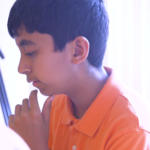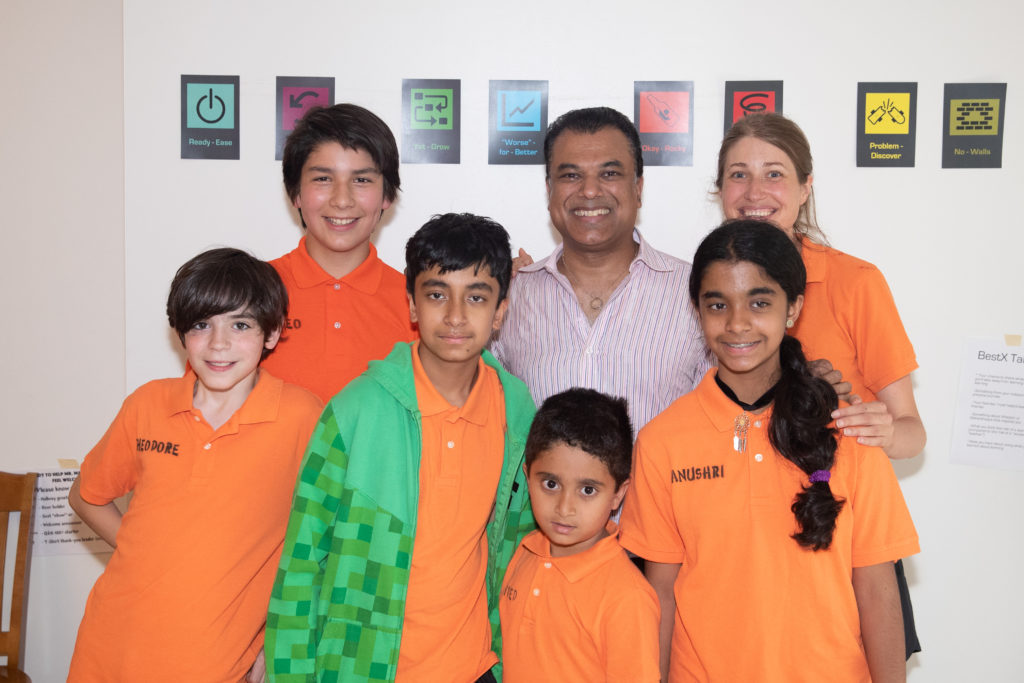PRINCETON, NJ
The Wuwei Princeton Academy (for SuperKids!) offers an intensive curriculum in Tai Chi, mindfulness, and optimal performance to help children (grades 2 – 6) thrive. Founder and teacher, Mackenzie Hawkins, had been indirectly incorporating TAOL themes into her classes and wanted to begin teaching the themes directly to the young students who had been studying Tai Chi with her for the past three years. She hoped the themes would facilitate her students’ deeper investigation of how and what they were learning in Tai Chi. The Art of Learning Project’s vision—“When children explore how they learn they become empowered…”—became the main objective for their 12-week semester.
This required teaching TAOL themes directly to young children who were too young to learn them from reading and discussing The Art of Learning book itself. At the same time, Mackenzie didn’t want to teach TAOL themes without, as she said, “the sense of how this one person [Josh Waitzkin] is exploring all of this and taking all of this on. I would like to share that sense with my young students somehow because that’s the role model that helps it feel so real and interconnected.”
Mackenzie used short quotes from the book and The Art of Learning Project website for some of the themes and also wrote 8 short “Josh Stories,” illustrating themes from The Art of Learning book, which the young children could easily read and discuss in class. One story in particular (“The Boy Who Hadn’t Lost in a Year”) had an immediate impact on several of the students, enabling them to take on harder challenges with less stress. Mackenzie wrote after class that day, “As a teacher, I just can’t tell you how grateful I am for this.” She joked that Waitzkin’s stories should come with a caution label: May impact lives!
To further make TAOL themes more accessible for younger children, Mackenzie gave the learning themes more immediately descriptive names with easier words for kids, as well as linked them to visual cards (and stickers) based on the icons from The Art of Learning Project website. (Mackenzie created a Carving our Path PDF to give an overview of how she adapted the theme names and grouped them into three categories: Guiding, Discovering, and Applying. There are also PDFs of TAOL theme cards with the original names in the Tools for Educators and Coaches section of our website.)
For the first half of the semester, the children practiced and learned Tai Chi, using the challenges and reflections built into their SuperKid Game to explore their own learning through TAOL themes. During the second half of the semester, the children were given the challenge of designing their own Tai Chi independent practice plans based on TAOL themes, executing these plans in 10-15 minute practice sessions, and journaling about their experience. Mackenzie was thrilled with how the themes gave students both freedom and structure as learners because students could practice any aspect of Tai Chi they wanted to—in any way they wanted to—while using TAOL themes in doing so. With their heightened engagement and sense of self-reliance, the children naturally deepened their practice of Tai Chi during these independent practice sessions. Mackenzie wrote, “I can’t teach kids this ‘from the outside.’ Only when SuperKids are empowered as ‘captains’ of their own learning experience can they learn at this level.” (Throughout the semester, Mackenzie wrote in-depth parent emails describing the journey she and her students took together, including many samples of student work and comments. You can find her Wuwei Princeton Parent Emails – TAOL here.)
To “bring it all together” as a capstone project for the semester, the children could pick any skill that they wanted to get better at, such as playing a sport or musical instrument, and use TAOL themes to design, execute, and journal 12 independent practice sessions over 4 weeks in order to be awarded the Declaration of Independent Learner Badge.
In the final weeks, the children also prepared to host their Being Your Best Summit where they would have Q&A about learning with a very special guest, jazz musician Rudresh Mahanthappa. Through the lens of TAOL themes, the children read transcripts of Mahanthappa’s insights into how he excels as a jazz improviser and composer. Mackenzie reported that the children loved making “webs of connections” between the themes and would eagerly discuss how interrelated they are with each other. The children each gave BestX Talks (their own version of Tedx Talks) at their Being Your Best Summit, and one of the children’s speeches is featured in the Learning Journal Blog post “A Real Learner”. Another student’s “webs of learning connections” and TAOL insight notes are available under Student Work.
“What I have loved so much about the learning themes,” says Mackenzie, “is that they’ve been a way for us to connect the very specific to the very general—and everything in-between. There’s been a lot of moments this semester, when I’ve felt like saying, ‘Whoa—and wow!’” She continues, “It’s my poorly-kept secret that I teach what I need myself and what I wish I had learned earlier. What if I could have grown up with learning themes and with the sense of empowerment about my own learning process that came with them? What if I could have grown up with a role model showing how it was possible to develop oneself as a learner (of anything)? That would have been cool—and oh so helpful.”

